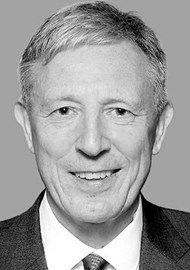There are things that we just do not know because it is now too late to find out: what were the oxygen saturation levels, for example? But there are other things we do not know although they are known. Where did Dr Kwan go when she left the operating room?
The Judge raised a good question which remains unanswered; why did she go? But let me give a full quote of para 63 in the Reasons for Sentencing.
Para 63. Appallingly, the defendant left Lee in the hands of medically untrained assistants when she knew that Lee was sedated and not awake or conscious. I would be so bold as to suggest that no patient would have opted for this surgery if they were told by their doctor prior to the surgery, “after the operation I will leave you in the care of my medically untrained assistants who are beauticians and receptionists whilst you are still sedated and unconscious.” No doctor let alone a person in their right mind would have expected a doctor to leave Lee when she was not awake. Obviously, the defendant should have waited until Lee was completely awake from her sedation and stable before departing. It remains a mystery as to what the defendant’s engagement was. The defendant’s conduct in leaving when she did can only be categorised as deplorable.
So, from the top, the italicised highlights:
“…when she knew …” sadly, there is no proof that she knew the state of consciousness of the patient, the evidence strongly suggests that she did not know the state of consciousness of the patient. How can I say such a thing? It is related to measurements. The measurements we make and the deductions we can draw from them. How do we measure the state of consciousness of a patient? Dr Mainland, the Australian Medical Expert declared that she assessed levels of consciousness by the response of the patient using different levels of stimulation. A great problem with this is the essentially subjective nature of the assessment. This is why a far superior technique is available and that is a device that can actually collect and analyse real time brain function and relate that, objectively to levels of consciousness. The deductive truth must be that “…she did not know…”
“I would be so bold as to suggest” When I read this I had a sense of deja legere. There it is in HCCC 437/2015, Reasons for Sentencing in the Case of HKSAR and Mak Wan-ling. Judianna Barnes Judge of the Court of First Instance, High Court. She, too had created an impossible scenario and then made a subjective assessment devoid of fact, “I venture to say it would be highly unlikely…” Para 45
“No doctor let alone a person in their right mind would have expected a doctor to leave Lee when she was not awake.”
Freudian or Jungian? The Judge reveals her deep prejudice against the medical profession. It is in black and white: “No doctor let alone a person in their right mind …” How on earth could she say that? And again this “assumption”, “…… she was not awake”. Where is the proof? And let me continue with observations of reality regarding “Postoperative monitoring”. What is obvious to the Judge is not standard practice in most parts of the world. The statement “Obviously the defendant should have waited until Lee was completely awake from her sedation and stable before departing” is just not the way Medicine works.
“It remains a mystery as to what the defendant’s engagement was.” This is true but the fact that it is a mystery cannot justify automatically assuming the behaviour was “deplorable”.
What is, to me, “deplorable” is that the Judge has been so unprofessional by her adoption of unproven assumptions.
Para 64 next posting: it involves some interesting maths and how we relate probability to reality.




